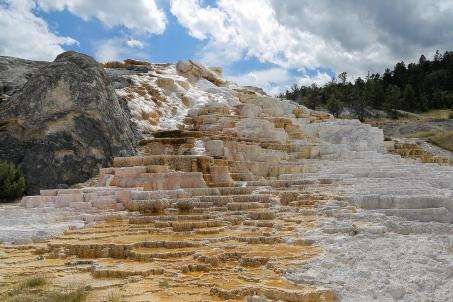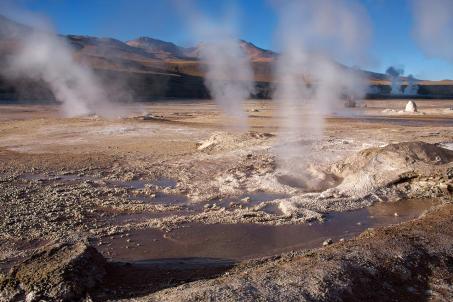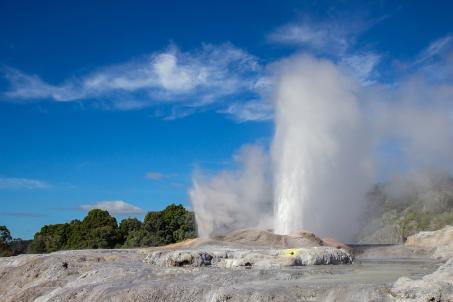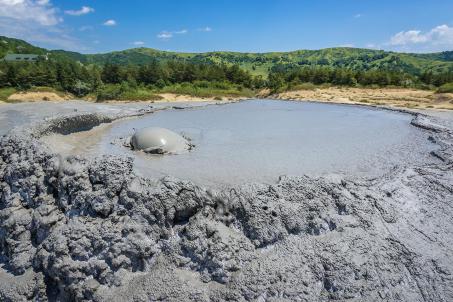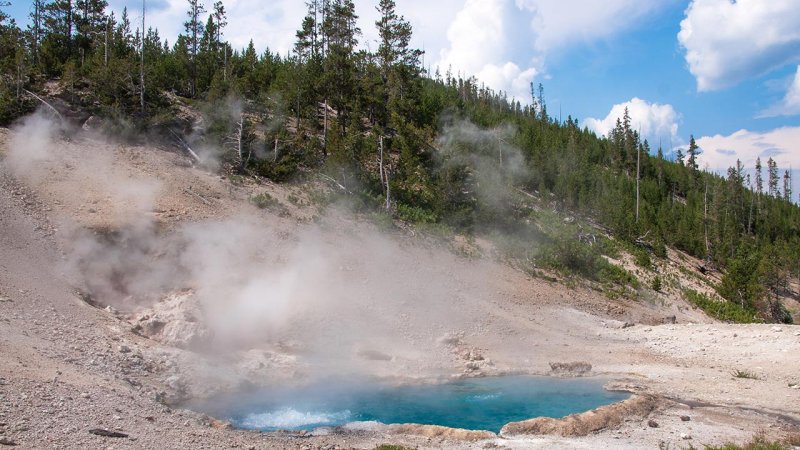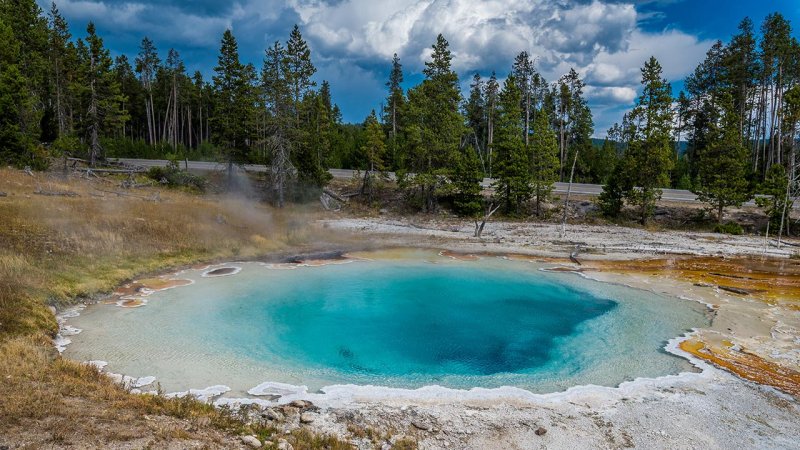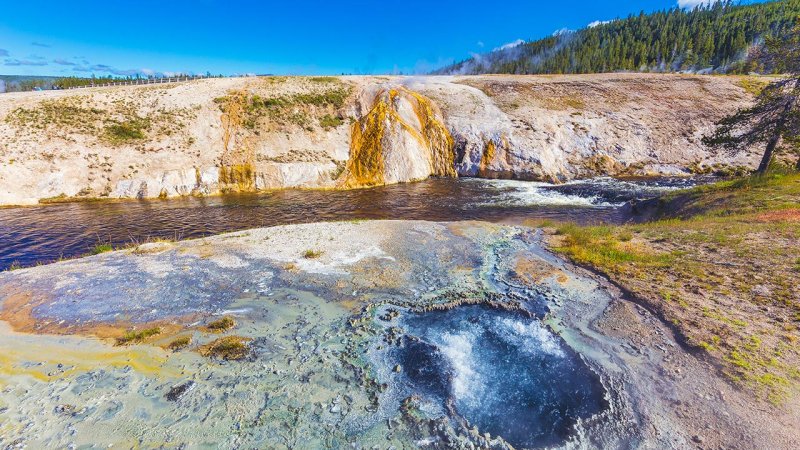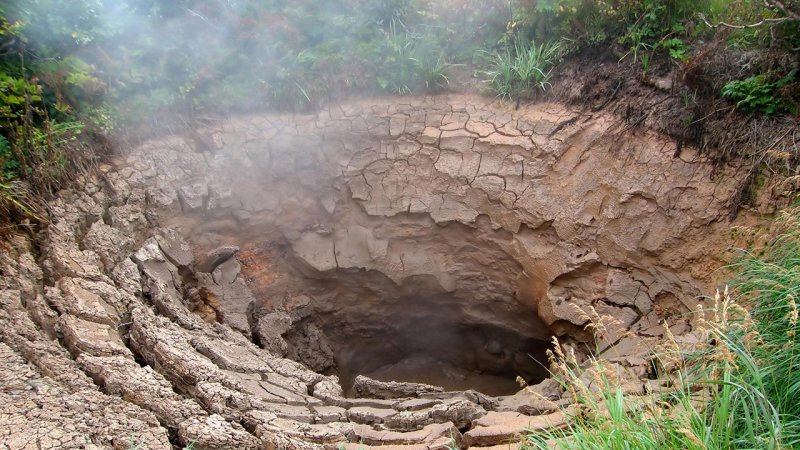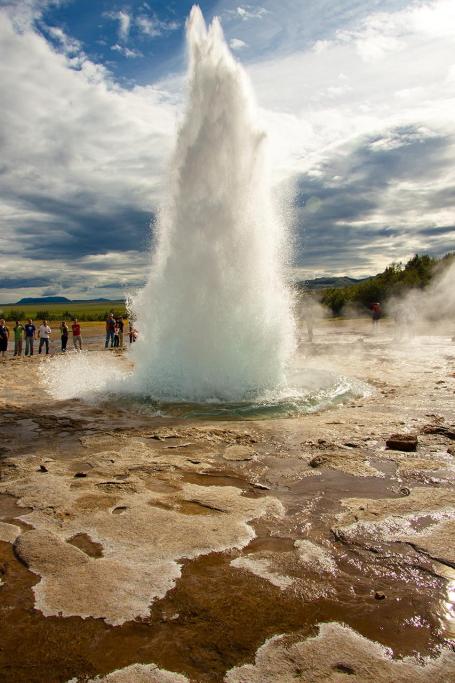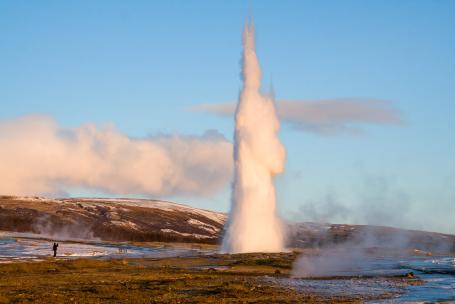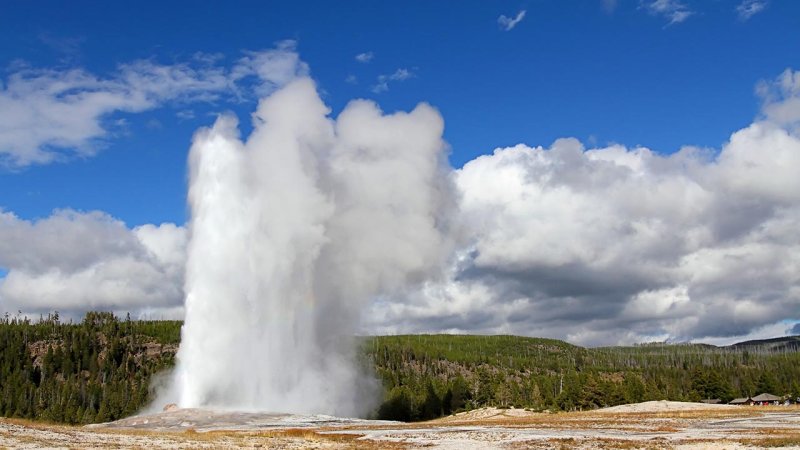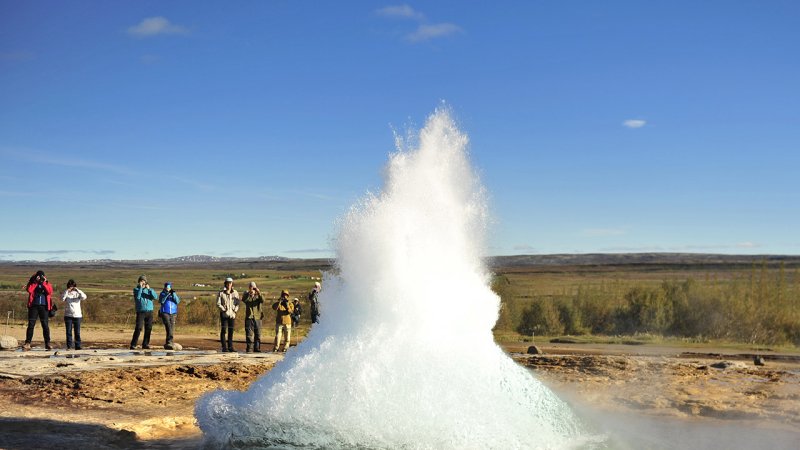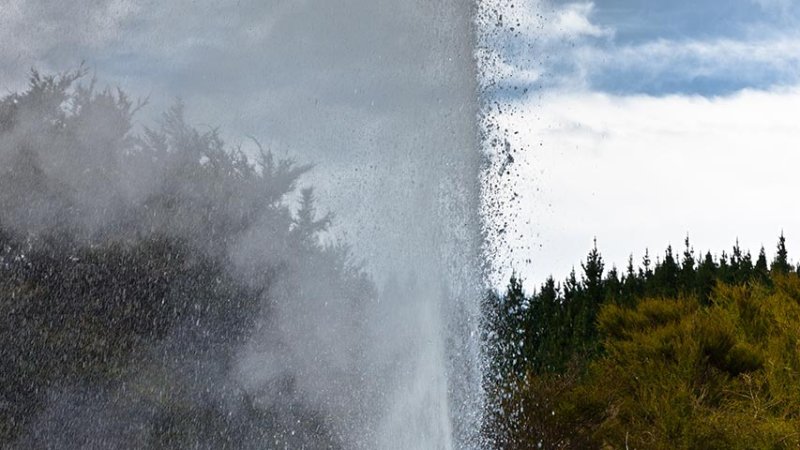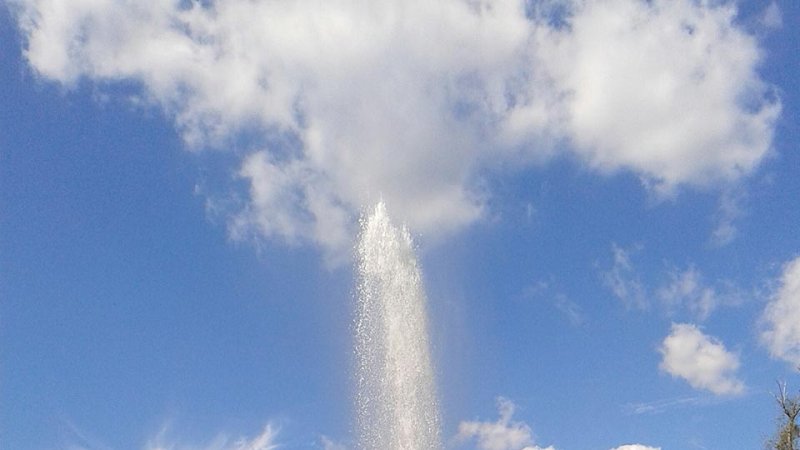
Geothermal Phenomena
4 min read
In places with high geothermal energy levels, the following phenomena can be observed:
Hot springs
with temperature often close to 100 °C. The hot water ascends from depths along fault lines.
Geysers
hot water with steam that is heated by magma in the deep and then erupts in sudden bursts to the surface.
Video: 3D model of volcanic activity. Due to the heat release which leads to a movement of molten material in the Earth’s body gets this material (magma) in some places to the Earth’s surface in the form of volcanic eruption.
Probably the most famous geyser in the world is Old Faithful in Yellowstone National Park in the USA.
The oldest still active geyser is the Castle in Yellowstone National Park. Judging by the geyserite sinter deposits, it may be well over 5,000 years old.
Mysterious Bursting Spring
The Strokkur geyser in the Hvítá river region (Iceland) expels boiling water regularly, every 5—10 minutes.
A geyser is a specific kind of spring that bursts out a mixture of water and steam in regular or irregular intervals, often as high as a few dozen meters. The term is derived from the Icelandic geyser named Geysir (geysa means to flow) and used to describe any similar formation. Several hundred geysers are known, mostly concentrated in five regions. The heat driving these geysers is magmatic.
A Geyser is basically a temporary geological formation that can form in a place where there is sufficiently porous bedrock, a rich source of water, a source of heat (e.g. magmatic) and a sufficiently watertight reservoir for the water to accumulate and heat up. Water enters the system through cracks in the Earth’s crust and it accumulates in the underground reservoir. The lower part of the reservoir is heated by hot rock or by magma to temperatures over the boiling point. Since the water is under great pressure from the surrounding rock and the hydraulic head over the reservoir, the water does not start to boil and remains liquid. Once the hot water ascends closer to the surface, where the pressure is not as high, or when the temperature simply reaches a critical limit, the superheated water violently changes into steam, which then occupies a volume 1,600 times larger than the volume of the water. The expanding steam then forces out the reservoir water above it to the surface. After that, the reservoir starts filling with colder water again preparing itself for the next eruption.
For a geyser to come into being, very specific hydrologic conditions are required, which mostly occur in volcanic regions.
Several hundred active geysers are known. Most of them are concentrated in five regions. About half of them can be found in Yellowstone National Park (map) in the USA. The second largest geyser field is in the Geyser Valley in Russia on the Kamchatka peninsula (map). The remaining three important sites with high geyser concentrations are El Tatio in Chile (map), the Taupo Volcanic zone in New Zealand (map) and practically the whole island of Iceland (map).
The highest geyser in the world is the Steamboat in the USA. It can throw water over 90 meters high. Until 1904 the highest geyser was the Waimangu, which had some eruptions higher then 460 meters.



